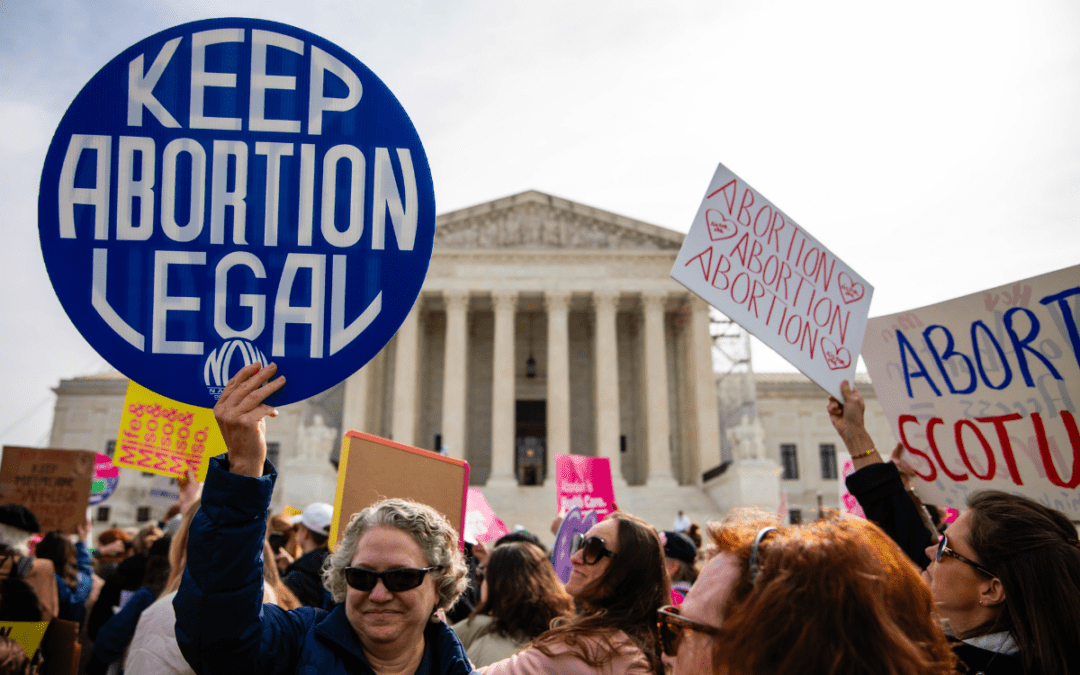
Aerial panorama of Allentown, Pennsylvania skyline on late sunny afternoon. Allentown is Pennsylvania's third most populous city. (Shutterstock Photo/Mihai Andritoiu)
Joe Biden won the Philadelphia suburbs and several small cities across Pennsylvania by larger margins than Hillary Clinton did in 2016, and lost other small cities by smaller margins.
Early on Election Day, Sen. Bob Casey, wearing a mask that said “Vote,” was optimistic. Very optimistic.
He was talking with reporters while Democratic Biden stood a few feet away, greeting local Scranton officials and volunteers during a last minute campaign stop to their hometown.
“He’s going to get at least 85% of the vote, I think he could get as high as 88,” Casey said, about the results in Philadelphia.
That would clinch the election for Biden, according to Casey.
On Saturday, we learned Casey’s confidence in the state was well placed, and Philadelphia was crucial. Its many votes were some of the last to be counted. However, it was the suburbs and the Keystone State’s small cities that catapulted Biden to victory.
Biden indeed did well in Philadelphia, winning 558,264 votes as of 1 p.m. Saturday. That put him more than 430,000 votes above Trump in the city.
On Tuesday, Casey pointed out that President Barack Obama had won Philadelphia by more than 492,000 votes to win re-election in 2012, but former Secretary of State Hillary Clinton won the city by 475,000 votes in 2016.
The 2016 election saw a record 6,165,478 votes cast. This year’s turnout soared past that mark with at least 6,731,837 Pennsylvanians votes tallied by Saturday afternoon. (Election officials still need to count 76,498 mail-in ballots, and more than 104,000 provisional ballots.)
Voters turned out across the state. Trump increased his numbers in almost every county. And Biden far surpassed Clinton’s numbers in several important areas.
The numbers are striking.
Much is made of the “Pennsylvania T.” Democratic strategist James Carville once said, “Between Paoli and Penn Hills, Pennsylvania is Alabama without the Blacks. They didn’t film ‘The Deer Hunter’ there for nothing—the state has the second-highest concentration of NRA members, behind Texas.”
The 2016 election reinforced that idea, with Clinton dominating Philadelphia, running strong in its suburbs and Pittsburgh, and having small victories in Centre County (Penn State University), Dauphin County (Harrisburg), and a pair of Northeastern counties (Scranton). Trump took the “Pennsylvania T.”
This year, Biden drove up turnout in Philadelphia, its suburbs, and those small and mid-sized cities.

Philadelphia Region Dominates
Philadelphia, which neighbors Biden’s current home state of Delaware, came out strong for Biden.
But the surrounding suburbs came out proportionately stronger.
Bucks County barely went to Clinton four years ago. She won the county by less than 1% when it tossed 167,060 votes her way. As of noon Saturday, Biden had 198,251 votes to Trump’s 182,742, making his margin of victory 4%.
The president-elect even increased turnout in Delaware County, where Clinton dominated Trump by 22 points four years ago. As of 1 p.m. Saturday, he topped her 177,402 with 200,911 votes and a near 26-point advantage over Trump.
Montgomery County is another area where Biden made a leap. In 2016, Clinton won by roughly 21.5% with 256,082 votes. Biden blew past those numbers with at least 313,543 votes, which is a 26-point victory.

Small Cities Turn Out Big for Biden
While Philadelphia its suburbs certainly did the heavy lifting, other parts of the state showed up for Biden, too.
One northeastern county, Lackawanna, includes Biden’s childhood home of Scranton. With a few hundred votes remaining to be counted as of Saturday afternoon, Biden had more than 61,000 votes in the county, at least 10,000 more than Hillary Clinton had in 2016. His margin of victory more than doubled hers, from 3% to more than 8%.
The other northeastern county, Monroe, went to Hillary in 16 by just 532 votes. That’s less than 1%. By Saturday, Biden led by 4,805 votes.
Biden earned 77,387 votes in Dauphin County, where the state capital is located, as of Saturday afternoon. In 2016, Clinton won Dauphin by just under 3%, netting 64,706 votes.
He also outran Clinton in Lehigh County, where Allentown is located, 95,539 this year to her 81,324 in 2016. The difference went from 4.74% in 2016 to 7% this year.
Clinton lost Erie County by 1,957 votes, or just 1.58%. Clinton ended up with 58,112 votes. Biden has 67,481 votes.
Even Centre County, which is home to Penn State University, saw an increase in Biden voters. In 2016, it went to Clinton by 2.38% as she garnered 37,088 votes. By Saturday afternoon, Biden netted 39,711 votes, putting him up almost 5%.
Some of Pennsylvania’s other small cities—such as Reading and Lancaster—are in rural counties that went to Trump.
Biden was able to cut into the losses Clinton took in those areas.
Clinton lost Lancaster County, which includes the city of Lancaster, by 19.42% when she garnered 91,093 votes. Biden pulled in 112,536 votes in the county, and lost it by less than 17%.
Clinton lost Berks, where Reading is the county seat, by nearly 10 points when she earned 78,437 votes. Berks still went to Trump, but Biden racked up more than 89,000 votes and cut the lead to 8.28%.
Lancaster and Berks also proved that Trump could drive up his own turnout. In no county did Trump lose 5% or more of his vote. In many counties, he soared past his 2016 numbers.
But it wasn’t enough to overcome Casey’s prediction about the state.
Politics

How Project 2025 aims to ban abortion in Pennsylvania
Former president Donald Trump said abortion was a state’s rights issue recently, but conservative organizations, under the banner “Project 2025,”...

736,000 PA households could lose crucial help on their internet bills
Time is running out for the Affordable Connectivity Program, which provides low-cost high speed internet access for over 736,000 Pennsylvania...

What to know about Trump’s legal issues
Over the past year, former president Donald Trump has become the center of not one, not two, not three, but four criminal investigations, at both...
Local News

Conjoined twins from Berks County die at age 62
Conjoined twins Lori and George Schappell, who pursued separate careers, interests and relationships during lives that defied medical expectations,...

Railroad agrees to $600 million settlement for fiery Ohio derailment, residents fear it’s not enough
Norfolk Southern has agreed to pay $600 million in a class-action lawsuit settlement for a fiery train derailment in February 2023 in eastern Ohio,...





